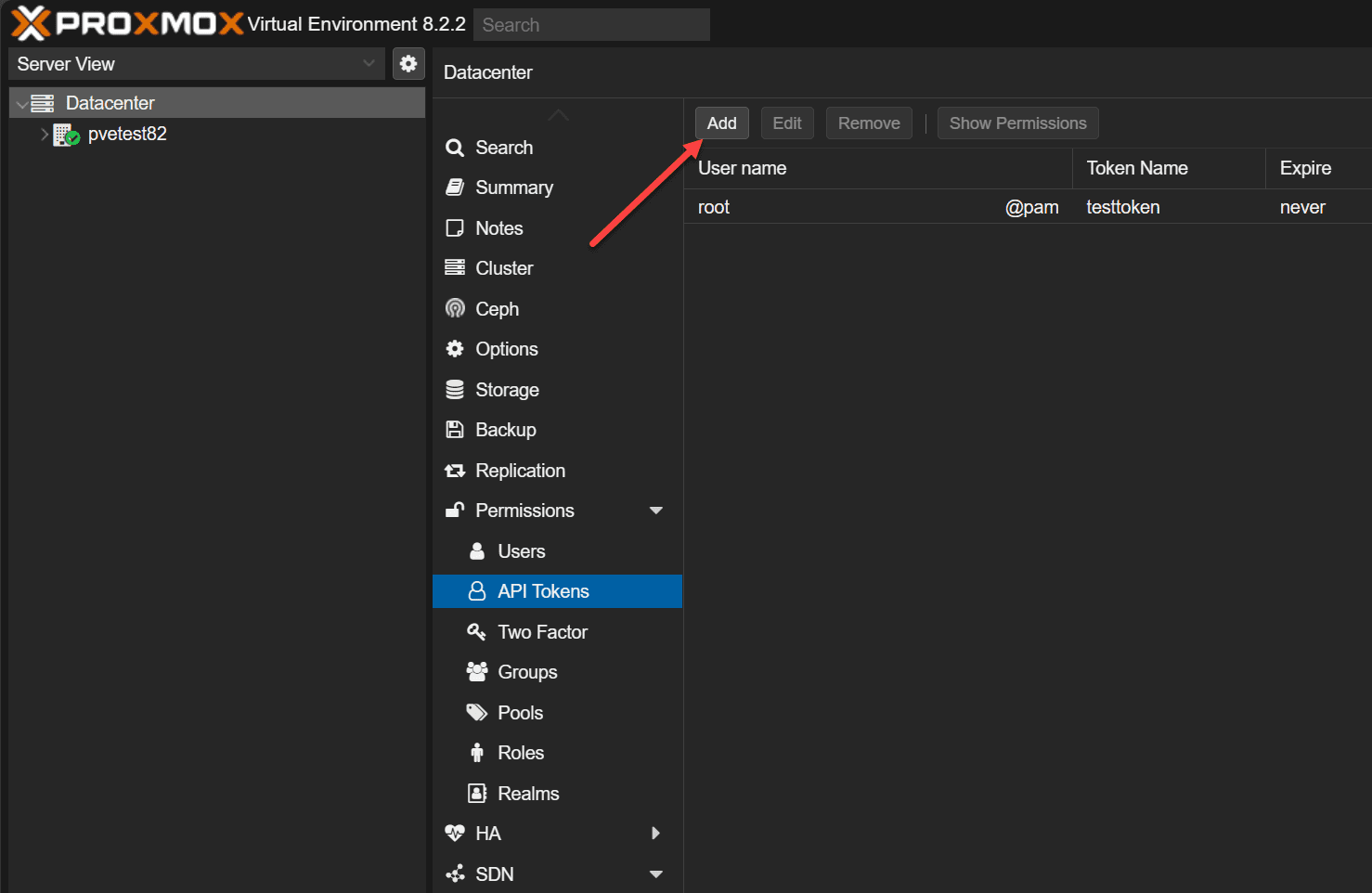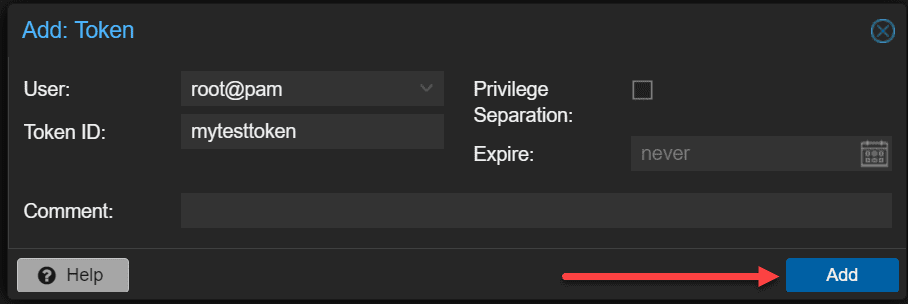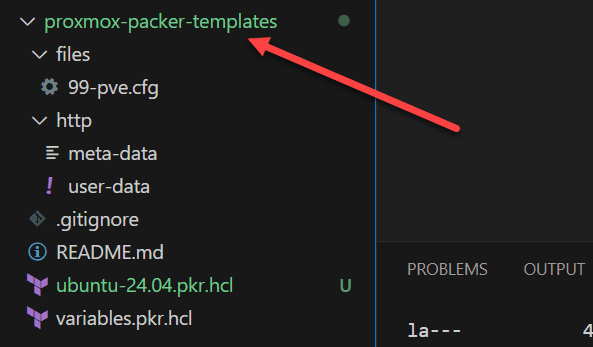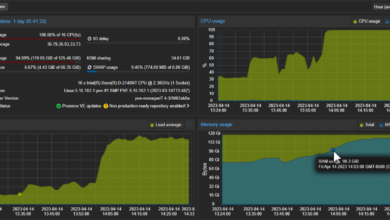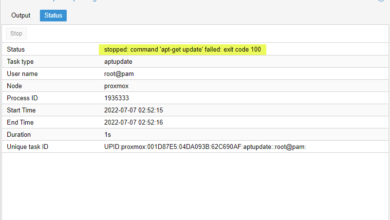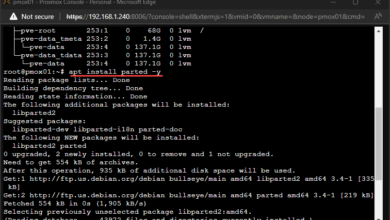Proxmox Packer Template for Ubuntu 24.04

I have been playing around with Packer and getting templates updated in the home lab. In moving more into Proxmox in the lab environment, I wanted to get similar templates in place as I have with VMware vSphere. Let’s look at how to build a Proxmox Packer template for Ubuntu 24.04 and see how you can automate Ubuntu installations on Proxmox.
Table of contents
Why is Packer helpful?
Packer is extremely helpful since it allows you to have automated installations of operating systems in your virtualized environment. You can use Packer in a script or other automation, like a CI/CD pipeline to keep your templates updated regularly, instead of making this a manual process.
What do you need to get started?
You need:
- Proxmox VE server installed on a host
- Generated Proxmox API token
- Packer downloaded and working
- The Proxmox plugin for Packer
- Required files for the Packer build
Let’s look at these one by one.
1. Proxmox VE Server installed on a host
Getting Proxmox installed is super easy. It involves downloading the ISO, using something like Ventoy or Rufus to “burn” the ISO to a USB boot device, then booting your server. You can also use nested virtualization if you want to try out Proxmox.
Check out a few resources here:
2. Generated Proxmox API token
In your Proxmox environment, you need to generate an API token for Packer to use to access the environment. To do that, you need to perform the following steps:
In the Add: Token dialog, choose the user you want to use, then enter a Token ID and uncheck Privilege Separation. Click Add.
On the Token Secret dialog, you will see the Token ID and Secret displayed. You will want to copy these values as we will use them in our Packer build files.
3. Packer downloaded and working
You can download Packer for your platform you are using as your admin workstation to work with your Promxox environment here: Install | Packer | HashiCorp Developer.
4. The Proxmox plugin for Packer
Like Terraform, Packer works similarly with plugins that allow it to “talk” to various infrastructure environments, including Proxmox.
You can download the Proxmox plugin for Packer using the following command:
packer plugins install github.com/hashicorp/proxmoxIn addition, Packer will automatically download and install the needed plugins if these are referenced in your Packer build code. We will see this in the example files, but the following code tells Packer which plugin it needs to build the infrastructure on Proxmox.
packer {
required_plugins {
name = {
version = "~> 1"
source = "github.com/hashicorp/proxmox"
}
}
}Then you can run the Packer init command to initialize your Packer environment, which will automatically pull the required plugin files:
packer init .
5. Required files for the Proxmox Packer Template for Ubuntu 24.04
As a note, I have take a lot of what Christian “My Digital Life” posted for Ubuntu 22.04 Packer template and modified them for my purposes and for Ubuntu 24.04. You can find his resources here. There are a few files required to build a Proxmox Packer template for Ubuntu 24.04:
- ubuntu-24.04.pkr.hcl – contents below
- variables.pkr.hcl – contents below
- user-data – contents below
- meta-data – this file is blank
- 99-pve.cfg – contents below
You can see the directory structure of where the files need to be place below:
ubuntu-24.04.pkr.hcl
Below you will see the resource definition file for your Ubuntu 24.04 build with Packer on Proxmox. Note the http_bind_address you can use if you need to specify which IP address you want to use.
# Ubuntu Server Noble Numbat
# ---
# Packer Template to create an Ubuntu Server 24.04 LTS (Noble Numbat) on Proxmox
# Resource Definition for the VM Template
packer {
required_plugins {
name = {
version = "~> 1"
source = "github.com/hashicorp/proxmox"
}
}
}
source "proxmox-iso" "ubuntu-server-noble-numbat" {
# Proxmox Connection Settings
proxmox_url = "${var.proxmox_api_url}"
username = "${var.proxmox_api_token_id}"
token = "${var.proxmox_api_token_secret}"
# (Optional) Skip TLS Verification
insecure_skip_tls_verify = true
# VM General Settings
node = "pvetest82"
vm_id = "199"
vm_name = "ubuntu-server-noble-numbat"
template_description = "Noble Numbat"
# VM OS Settings
iso_file = "local:iso/ubuntu-24.04-live-server-amd64.iso"
iso_storage_pool = "local"
unmount_iso = true
template_name = "packer-ubuntu2404"
# VM System Settings
qemu_agent = true
# VM Hard Disk Settings
scsi_controller = "virtio-scsi-pci"
disks {
disk_size = "20G"
format = "raw"
storage_pool = "local-lvm"
type = "virtio"
}
# VM CPU Settings
cores = "1"
# VM Memory Settings
memory = "2048"
# VM Network Settings
network_adapters {
model = "virtio"
bridge = "vmbr0"
firewall = "false"
}
# VM Cloud-Init Settings
cloud_init = true
cloud_init_storage_pool = "local-lvm"
# PACKER Boot Commands
boot_command = [
"<esc><wait>",
"e<wait>",
"<down><down><down><end>",
"<bs><bs><bs><bs><wait>",
"autoinstall ds=nocloud-net\\;s=http://{{ .HTTPIP }}:{{ .HTTPPort }}/ ---<wait>",
"<f10><wait>"
]
boot = "c"
boot_wait = "5s"
# PACKER Autoinstall Settings
http_directory = "./http"
#http_bind_address = "10.1.149.166"
# (Optional) Bind IP Address and Port
# http_port_min = 8802
# http_port_max = 8802
ssh_username = "ubuntu"
# (Option 1) Add your Password here
ssh_password = "ubuntu"
# - or -
# (Option 2) Add your Private SSH KEY file here
# ssh_private_key_file = "~/.ssh/id_rsa"
# Raise the timeout, when installation takes longer
ssh_timeout = "20m"
}
# Build Definition to create the VM Template
build {
name = "ubuntu-server-noble-numbat"
sources = ["proxmox-iso.ubuntu-server-noble-numbat"]
# Provisioning the VM Template for Cloud-Init Integration in Proxmox #1
provisioner "shell" {
inline = [
"while [ ! -f /var/lib/cloud/instance/boot-finished ]; do echo 'Waiting for cloud-init...'; sleep 1; done",
"sudo rm /etc/ssh/ssh_host_*",
"sudo truncate -s 0 /etc/machine-id",
"sudo apt -y autoremove --purge",
"sudo apt -y clean",
"sudo apt -y autoclean",
"sudo cloud-init clean",
"sudo rm -f /etc/cloud/cloud.cfg.d/subiquity-disable-cloudinit-networking.cfg",
"sudo rm -f /etc/netplan/00-installer-config.yaml",
"sudo sync"
]
}
# Provisioning the VM Template for Cloud-Init Integration in Proxmox #2
provisioner "file" {
source = "files/99-pve.cfg"
destination = "/tmp/99-pve.cfg"
}
# Provisioning the VM Template for Cloud-Init Integration in Proxmox #3
provisioner "shell" {
inline = [ "sudo cp /tmp/99-pve.cfg /etc/cloud/cloud.cfg.d/99-pve.cfg" ]
}
}variables.pkr.hcl
The variables file houses the variables for our Packer build. Below are the real values I used in my test environment. I want you to be able to see how these look populated.
variable "proxmox_api_url" {
type = string
default = "https://10.1.149.199:8006/api2/json"
}
variable "proxmox_api_token_id" {
type = string
default = "root@pam!testtoken"
}
variable "proxmox_api_token_secret" {
type = string
default = "de7cd80c-cf3c-43fc-bd26-df6cf3b9c98c"
sensitive = true
}user-data
The user-data file controls the cloud config portion of the build. Below the hashed password for the ubuntu user is ubuntu. You can create a hashed password for your user using the Linux commands:
sudo apt-get install whois
mkpasswd --method=SHA-512 --rounds=4096After you generate your password you want to use, you can replace the hashed value below.
#cloud-config
autoinstall:
version: 1
locale: en_US
keyboard:
layout: us
ssh:
install-server: true
allow-pw: true
disable_root: true
ssh_quiet_keygen: true
allow_public_ssh_keys: true
packages:
- qemu-guest-agent
- sudo
storage:
layout:
name: direct
swap:
size: 0
user-data:
package_upgrade: false
timezone: America/Chicago
users:
- name: ubuntu
passwd: "$6$rounds=4096$4SY5kMDOITTy3R6s$vgp01IwfMWJRYxY1pa.D6xS.TEzGkMpVqxZtxPQrYuHzvywq2sSw/Z.yEmG3hsWnERCorBbN7tdMttVTcj4u61"
groups: [adm, sudo]
lock-passwd: false
sudo: ALL=(ALL) NOPASSWD:ALL
shell: /bin/bash99-pve.cfg
datasource_list: [ConfigDrive, NoCloud]What to do next: Download the files from Github
To make it easier to get started with all the files in place that you need, you can clone down the repo I have for Packer builds that includes the Proxmox Packer template for Ubuntu 24.04:
git clone https://github.com/brandonleegit/PackerBuilds.gitAre you looking for a Packer template for Ubuntu 24.04 and VMware? Check out my recent post here with a step-by-step walkthrough:
Troubleshooting
When working with Packer, encountering issues during the build process is not uncommon. Whether it’s misconfigurations, environmental issues, or syntax errors, troubleshooting is an essential skill. Below are some general troubleshooting steps to help diagnose and resolve problems with Packer:
- Validate Your Configuration:
- Use the
packer validatecommand to check for syntax errors and misconfigurations in your Packer templates. This should always be your first step as it can quickly highlight issues that are otherwise hard to diagnose.
- Use the
- Run Packer in Debug Mode:
- Use the
--debugflag when running your Packer build. This mode pauses the build at various steps and allows you to inspect the state of the build interactively, making it easier to identify where things go wrong.
- Use the
- Review Logs and Outputs:
- Carefully examine the console outputs and logs generated by Packer. Errors and warnings can provide crucial clues about what’s failing.
- Check the logs on the VM itself, such as
/var/log/syslog,/var/log/cloud-init.log, or specific application logs for more detailed error information.
- Check Environment Settings:
- Make sure all environment variables and paths are set correctly, especially those that your build scripts depend on.
- Verify network settings, especially if your build involves downloading files from external sources or requires network connectivity to provisioners.
- Examine Provisioners:
- Review the scripts or commands being run if errors occur during the provisioning phase. Try executing them manually on a test VM to ensure they work as expected.
- Isolate the Issue:
- Simplify your Packer template to the minimum configuration that reproduces the issue. This can help isolate the problem area, making it easier to diagnose.
- Update Packer and Plugins:
- Ensure you are using the latest version of Packer and any plugins your templates depend on. Bugs and issues in older versions can sometimes cause unexpected behavior.


